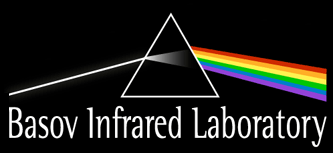Cavity Quantum Materials
Is it feasible to alter the ground state properties of a material by engineering its electromagnetic environment? Inspired by theoretical predictions, experimental realizations of such cavity-controlled properties without optical excitation are beginning to emerge. Our group devised and implemented a novel platform to realize cavity-altered materials based on van der Walls crystals and heterostructures. We exploit a suite of scanning nano-probe techniques to inquire into the physics of cavity-matterials interactions.
Highlights:
Molecular Plasmonic Cavities
Daniel J. Rizzo et al., Nano Letters 25, 14043–14050 (2025). Ref. [386].
Details
 Graphene-based photonic structures have emerged as fertile ground for the controlled manipulation of surface plasmon polaritons (SPPs), providing a two-dimensional platform with low optoelectronic losses. In principle, nanostructuring graphene can enable further confinement of nanolight─enhancing light-matter interactions in the form of SPP cavity modes. In this study, we engineer nanoscale plasmonic cavities composed of self-assembled C60 arrays on graphene. Using scattering-type scanning near-field optical microscopy (s-SNOM) in conjunction with first-principles density functional theory (DFT) calculations, we show that C60 assemblies behave as molecular plasmonic cavities, giving rise to precisely defined hole-doped regions within continuous samples of graphene. By tuning the deposition conditions of C60, the lateral dimensions of molecular cavities can be tailored to the SPP wavelength. Finite-element simulations verify the existence of SPP cavity modes, revealing a real-space pattern characteristic of confined SPPs. Thus, our study provides a straightforward scheme for tailoring SPP mode volume by leveraging molecular self-assembly.
Graphene-based photonic structures have emerged as fertile ground for the controlled manipulation of surface plasmon polaritons (SPPs), providing a two-dimensional platform with low optoelectronic losses. In principle, nanostructuring graphene can enable further confinement of nanolight─enhancing light-matter interactions in the form of SPP cavity modes. In this study, we engineer nanoscale plasmonic cavities composed of self-assembled C60 arrays on graphene. Using scattering-type scanning near-field optical microscopy (s-SNOM) in conjunction with first-principles density functional theory (DFT) calculations, we show that C60 assemblies behave as molecular plasmonic cavities, giving rise to precisely defined hole-doped regions within continuous samples of graphene. By tuning the deposition conditions of C60, the lateral dimensions of molecular cavities can be tailored to the SPP wavelength. Finite-element simulations verify the existence of SPP cavity modes, revealing a real-space pattern characteristic of confined SPPs. Thus, our study provides a straightforward scheme for tailoring SPP mode volume by leveraging molecular self-assembly.
Van der Waals waveguide quantum electrodynamics probed by infrared nano-photoluminescence
Samuel L. Moore et al., Science Advances 11, eadh5672 (2025). Ref. [382].
Details
 Atomically layered van der Waals (vdW) materials exhibit remarkable properties, including highly confined infrared waveguide modes and the capacity for infrared emission in the monolayer limit. Here we engineered structures that leverage both of these nano-optical functionalities. Specifically, we encased a photoluminescing atomic sheet of MoTe2 within two bulk crystals of WSe2, forming a vdW waveguide for the embedded light-emitting monolayer. The modified electromagnetic environment offered by the WSe2 waveguide alters MoTe2 spontaneous emission—a phenomenon we directly image with our interferometric nano-photoluminescence technique. We captured spatially oscillating nanoscale patterns prompted by spontaneous emission from MoTe2 into waveguide modes of WSe2 slabs. We quantify the resulting Purcell-enhanced emission rate within the framework of a waveguide quantum electrodynamics model, relating the MoTe2 spontaneous emission rate to the measured waveguide dispersion. Our work marks a substantial advance in the implementation of all-vdW quantum electrodynamics waveguides.
Atomically layered van der Waals (vdW) materials exhibit remarkable properties, including highly confined infrared waveguide modes and the capacity for infrared emission in the monolayer limit. Here we engineered structures that leverage both of these nano-optical functionalities. Specifically, we encased a photoluminescing atomic sheet of MoTe2 within two bulk crystals of WSe2, forming a vdW waveguide for the embedded light-emitting monolayer. The modified electromagnetic environment offered by the WSe2 waveguide alters MoTe2 spontaneous emission—a phenomenon we directly image with our interferometric nano-photoluminescence technique. We captured spatially oscillating nanoscale patterns prompted by spontaneous emission from MoTe2 into waveguide modes of WSe2 slabs. We quantify the resulting Purcell-enhanced emission rate within the framework of a waveguide quantum electrodynamics model, relating the MoTe2 spontaneous emission rate to the measured waveguide dispersion. Our work marks a substantial advance in the implementation of all-vdW quantum electrodynamics waveguides.

